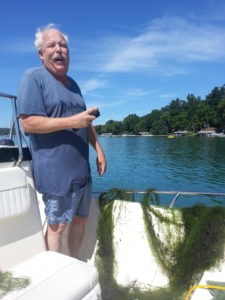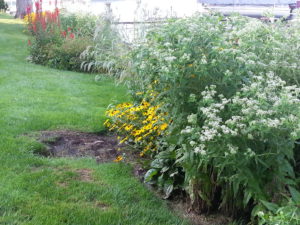Guest Blog by: Mike Gallagher, President, Michigan Lake Stewardship Associations, and Gull Lake Quality Organization
Way back in 2006, the Gull Lake association board of directors sat around the table and once again discussed the same old questions: “How do we know if our lake quality is getting better or worse? How can we monitor that?” With our small bank account, a curious board, and some passionate board members, we set off to hire consultants to help us design a monitoring program. We didn’t know what we didn’t know. The next couple of years produced a lot of reports, a lot of discussion, and luckily some new board members. But we didn’t have a monitoring program that anybody could agree upon.
How lucky we were in 2008, when a new board member, Brian Winne, said “My Dad does a lot of stuff with lake associations and I think they have a monitoring program. Maybe we should look into that?” After a little more discussion, I raised my hand and volunteered to go to the Michigan Lake Stewardship Association (MLSA) conference to participate in training with the Cooperative Lakes Monitoring Program (CLMP).
 Volunteering for CLMP turned out to be one of the best decisions our lake association board ever made. Why so? We now have a terrific monitoring program that has helped us to understand a great deal more about our lake. Data gathered since 2009 shows the lake is now clearer with less phosphorus and chlorophyll, and is now oligotrophic. The gathering of data has generated a curiosity among many of our lake association members. That curiosity is enhanced when they join me on the boat to help monitor the lake. After showing them procedures, gathering data, and answering questions, “Call me if you need help again!” is what I always hear as we return to the dock. Then, they go home and spread the word about what they learned.
Volunteering for CLMP turned out to be one of the best decisions our lake association board ever made. Why so? We now have a terrific monitoring program that has helped us to understand a great deal more about our lake. Data gathered since 2009 shows the lake is now clearer with less phosphorus and chlorophyll, and is now oligotrophic. The gathering of data has generated a curiosity among many of our lake association members. That curiosity is enhanced when they join me on the boat to help monitor the lake. After showing them procedures, gathering data, and answering questions, “Call me if you need help again!” is what I always hear as we return to the dock. Then, they go home and spread the word about what they learned.
CLMP also offered us the opportunity to learn how to do an aquatic vegetation survey and to score our shorelines. We jumped at the chance. Our survey found 26 different species of vegetation and only milfoil as a possible invasive. Providing the results to our lake association members caused one riparian to call us the next year about an odd vegetation growing at his dock. This turned out to be starry stonewort. With aquatic invasive species, we learned through CLMP that early detection and rapid response was essential. We took immediate action.
 The Score the Shore Program, shoreline habitat assessment procedure, gave our densely populated lake a dismal score. But, that led a good number of riparians to make changes to their shoreline. Without CLMP, we never would have known what improvements would help our shoreline and ultimately our lake water quality.
The Score the Shore Program, shoreline habitat assessment procedure, gave our densely populated lake a dismal score. But, that led a good number of riparians to make changes to their shoreline. Without CLMP, we never would have known what improvements would help our shoreline and ultimately our lake water quality.
This year there are fifty new “citizen scientists” enrolled in the CLMP training being conducted at the MLSA Conference at Crystal Mountain on May 3rd and 4th. There is room for more. MLSA welcomes all CLMP volunteers in training to join us at the conference, too. It’s a terrific way to meet lots of people who have been monitoring lakes for many years. It’s a great opportunity to learn from them and the educators and exhibitors. https://www.mymlsa.org/
The inland lakes in Michigan are enjoyed by many but need our attention to make sure they will be enjoyed in the future. For many “citizen scientists,” it all began with the CLMP.
Interested in becoming a volunteer lake monitor with the Cooperative Lakes Monitoring Program?
You can still enroll in many of the 2019 lake monitoring parameters; however, enrollment deadlines are rapidly approaching (May 10th). Visit our Become a Volunteer page to learn more.





